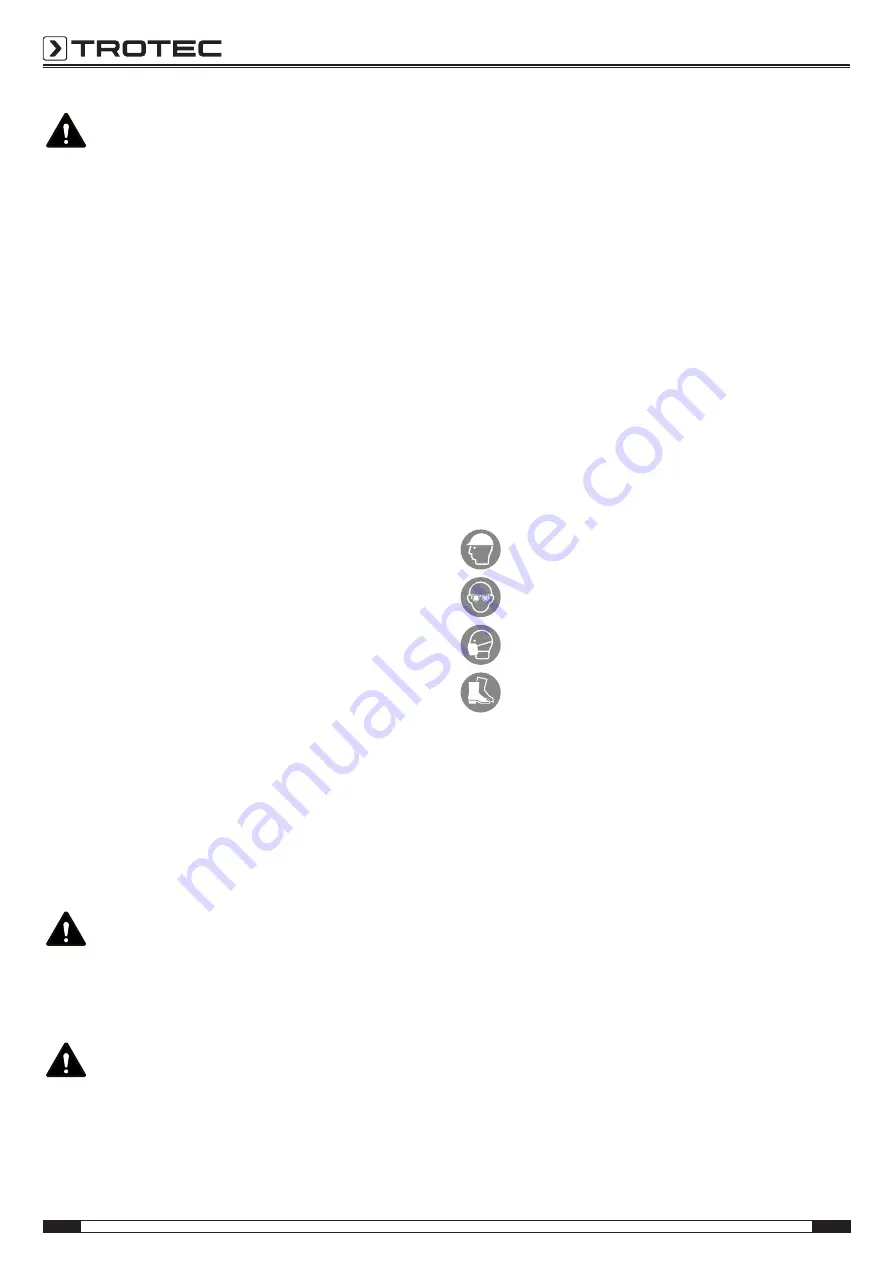
3
EN
Operating manual – rotary hammer PRDS 10-230V
General Power Tool Safety Warnings – Power tool
use and care
•
Do not force the power tool. Use the correct power tool
for your application.
The correct power tool will do the
job better and safer at the rate for which it was designed.
•
Do not use the power tool if the switch does not turn it
on and off.
Any power tool that cannot be controlled with
the switch is dangerous and must be repaired.
•
Disconnect the plug from the power source and / or
the battery pack, if detachable, from the power tool
before making any adjustments, changing
accessories, or storing power tools.
Such preventive
safety measures reduce the risk of starting the power tool
accidentally.
•
Store idle power tools out of the reach of children and
do not allow persons unfamiliar with the power tool or
these instructions to operate the power tool.
Power
tools are dangerous in the hands of untrained users.
•
Maintain power tools and accessories carefully. Check
for misalignment or binding of moving parts, breakage
of parts and any other condition that may affect the
power tool’s operation. If damaged, have the power
tool repaired before use.
Many accidents are caused by
poorly maintained power tools.
•
Keep cutting tools sharp and clean.
Properly maintained
cutting tools with sharp cutting edges are less likely to
bind and are easier to control.
•
Use the power tool, accessories and tool bits etc. in
accordance with these instructions, taking into
account the working conditions and the work to be
performed.
Use of the power tool for operations different
from those intended could result in a hazardous situation.
•
Keep handles and gripping surfaces dry, clean and
free from oil and grease.
Slippery handles and gripping
surfaces do not allow for safe handling and control of the
tool in unexpected situations.
General Power Tool Safety Warnings – Service
•
Have your power tool serviced by a qualified repair
person using only identical replacement parts.
This will
ensure that the safety of the power tool is maintained.
Device-specific safety warnings for rotary hammers
•
Use the additional handle pre-assembled at the device.
Losing control of the power tool may result in personal
injury.
•
Hold the device by its insulated gripping surfaces
when performing an operation where the insertion tool
may contact hidden wiring or its own cord.
Cutting a
"live" wire may make exposed metal parts of the power
tool "live" and could give the operator an electric shock.
•
Use appropriate detection equipment to track down
concealed supply lines or consult the local utility
companies.
Contact with electrical lines may result in fire
and electric shock. Damaging a gas line may lead to an
explosion. Penetrating a water line causes property
damage and may cause an electric shock.
•
Vibrations can be harmful to the human hand-arm
system.
Keep the vibration exposure time to a minimum.
•
During operation hold onto the power tool with both
hands.
Make sure that you stand firmly on the ground. It is
safer to handle the power tool with two hands.
•
Secure the workpiece.
The grip of tensioning devices or a
vice is more secure than holding the workpiece only by
hand.
Protect yourself and others present from injuries
caused by splintering and flying bits and pieces.
Wear a hard hat, eye protection, a dust mask and safety
boots. If necessary, put up partition panels as shield
against breaking off debris.
•
Before starting to work, always make sure that the
insertion tool is firmly clamped inside the drill chuck.
Insertion tools that are not locked in place could be
catapulted out of the power tool upon switch-on and lead
to injuries.
•
Before switching on the power tool, ensure that the
insertion tool can move freely.
If the device is switched
on with a jammed insertion tool, the resulting forces can
be extreme causing the device to kick out sideways.
•
Immediately switch off the power tool if the insertion
tool gets jammed.
The power tool can lash out to the side
owing to the forces that build up consequently.
•
Regularly check the drill chuck for wear or damage.
•
Only start a percussive power tool while holding it
against a workpiece (wall, ceiling, etc.).
•
Wait until the power tool has come to a standstill,
before putting it down.

























